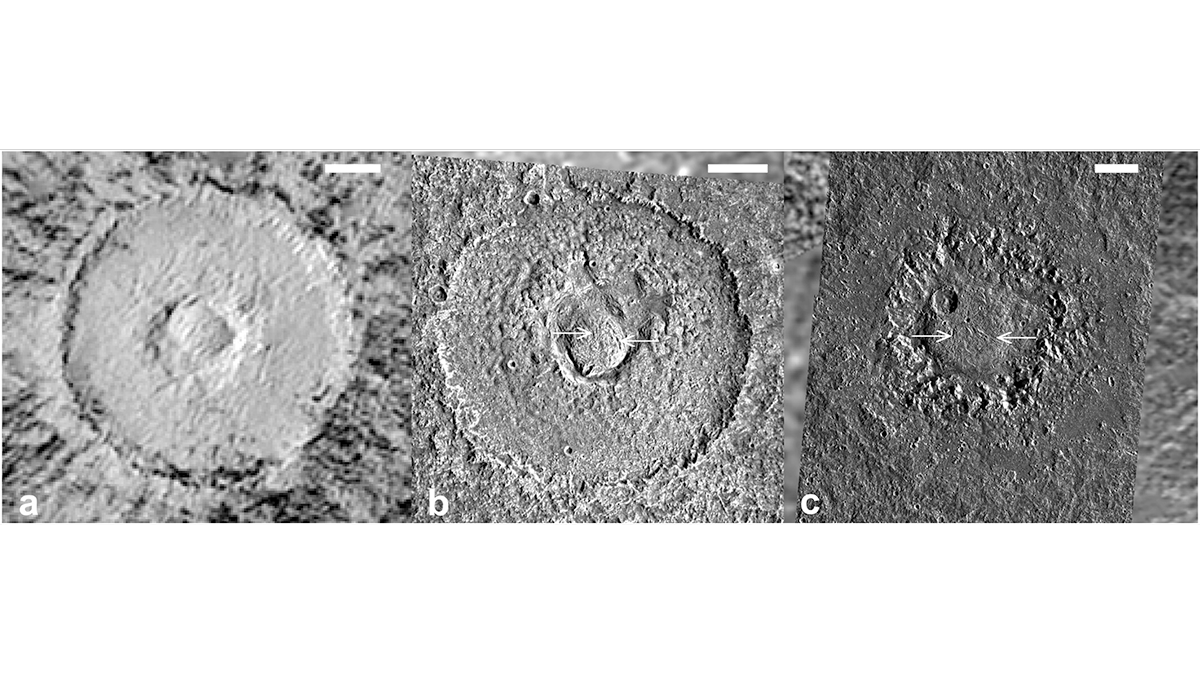Using Earth’s glaciers as an analog, a new study explores the possibility of downward propagation of fractures and melt in Europa’s icy crust.
Kelsi Singer
Associate Editor, JGR: Planets
Posted inEditors' Highlights
Unveiling the Origins of Dome Craters on Ganymede and Callisto
Large craters with broad central domes are a unique crater morphology on Jupiter’s largest icy moons: Ganymede and Callisto. A new study examines how remnant impact heat may lead to their formation.
Posted inEditors' Highlights
What Surprises do the Icy Uranian Moons Hold?
With efforts ramping up to send a spacecraft back to the Uranian system, anticipation is increasing as to what geological surprises are hiding inside and on the surfaces of the icy Uranian moons.



